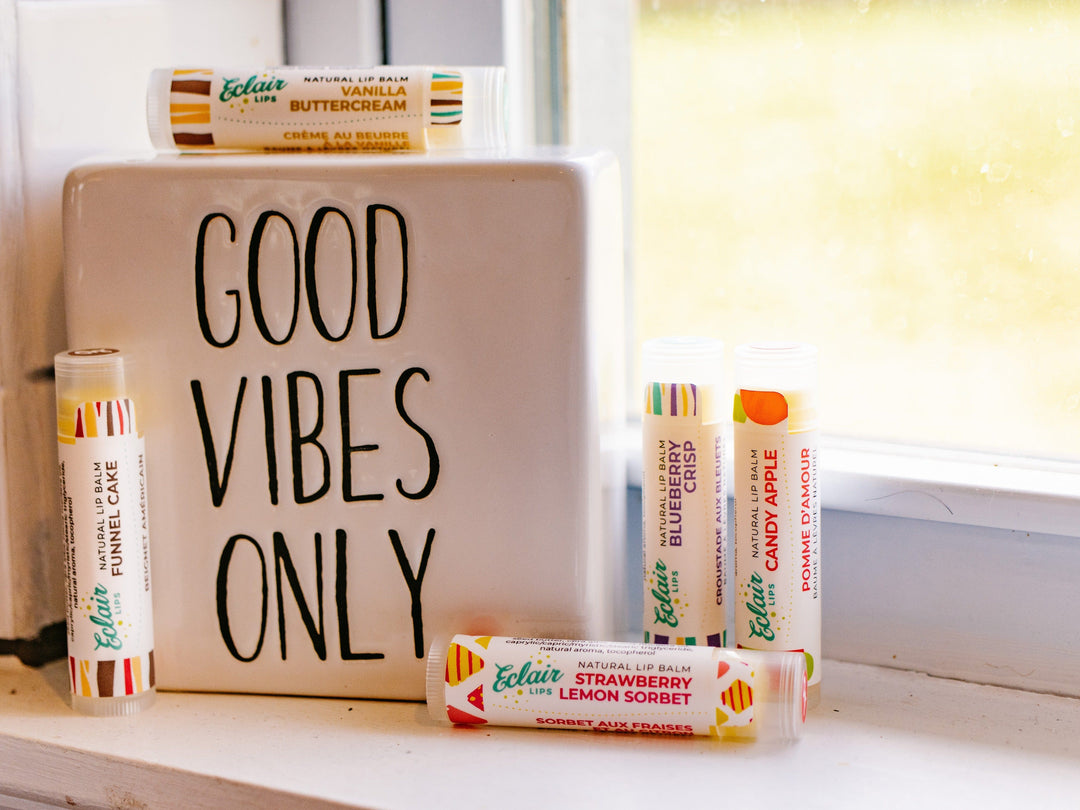All About Good Manufacturing Processes
I made a video talking about how our ingredients have expiry dates where we showed the custom labels that we make for every ingredient we receive, and some people were curious about them.
This is all part of the Good Manufacturing Processes - or just GMP for short - that we implemented to be able to track everything about our products, and let me tell you, I think it was the most painstaking, yet the most important and helpful thing I have done for my business!
I did not come up with this system on my own - there are courses that teach how to do it, and I took one to help me figure it all out. And those little labels were one of the very first steps.
Raw Material Identification
When we receive ingredients, we fill out a sheet to note the supplier and expiry date for that item, and check off that it meets a list of inspection criteria we have for that specific ingredient. We also assign it an internal part number that we’ll use for that ingredient anytime we reorder it, and a lot number for this particular shipment.
All this information gets logged in our records, and it also goes onto the Raw Material Identification labels that we stick onto the item to have all that information handy.
When it’s time to use in in a batch of lip balm, we fill out a batch record where we note how much of it we used as well as its lot number. From there, that batch gets assigned a batch code and we create a small label with that code for every single lip balm that we made from that batch.
Batch Codes
Implementing our GMP process was a huge undertaking, but I think the most frustrating part was figuring out a system to apply the batch codes to our tubes.
Batch codes are unique to each batch of lip balm, so we can’t get them pre-printed on the labels because it would just be a logistical nightmare since we outsource our printing and order them in bulk, so we needed another solution.
Since there are small inkjet printers that can do that sort of thing, I started looking into those. There are some that are super sophisticated, but they need to be attached to an automatic production line, which doesn’t work with our small-batch process. So I was excited to find a smaller version that was supposed to work perfectly with our current production setup. It was supposed to quickly print the bottom of the tubes with one quick swipe of the printer, but unfortunately, after spending a lot of time and money trying to make it work, we threw in the towel because it just didn’t produce consistent results.
I’m kicking myself now, because our solution was to get some tiny stickers that fit on the bottom of our tubes made, and we just print the quantity we need with the correct batch code and stick them on by hand. It’s low tech, but it works!
And once those batch codes are applied, the lip balm is ready to ship. And if at any point we want to look up what day that lip balm was made, we can easily find that information, along with who made it and which lots of each ingredient, the date we received that ingredient, and the supplier it came from. Pretty cool, right?
Standard Operating Procedures
The part of our GMP processes I felt the most overwhelmed about, but that was also the most rewarding to implement, was creating our Standard Operating Procedures. It’s basically a how-to document for every single task related to making our product. From how inspect ingredients we receive them, how to sanitize our workspace before making lip balm all the way to using the dishwasher to clean up and pretty much everything you can think of that comes in between all those steps!
What really encouraged me to take on this huge task was that it would allow me to finally step away from making lip balm and allow Lesley to take over, since she would have clear instructions on how to do things. Not only did it help her feel confident knowing that all the steps were carefully outlined for her, it will make it easy for future employees who join our team to get up to speed!




